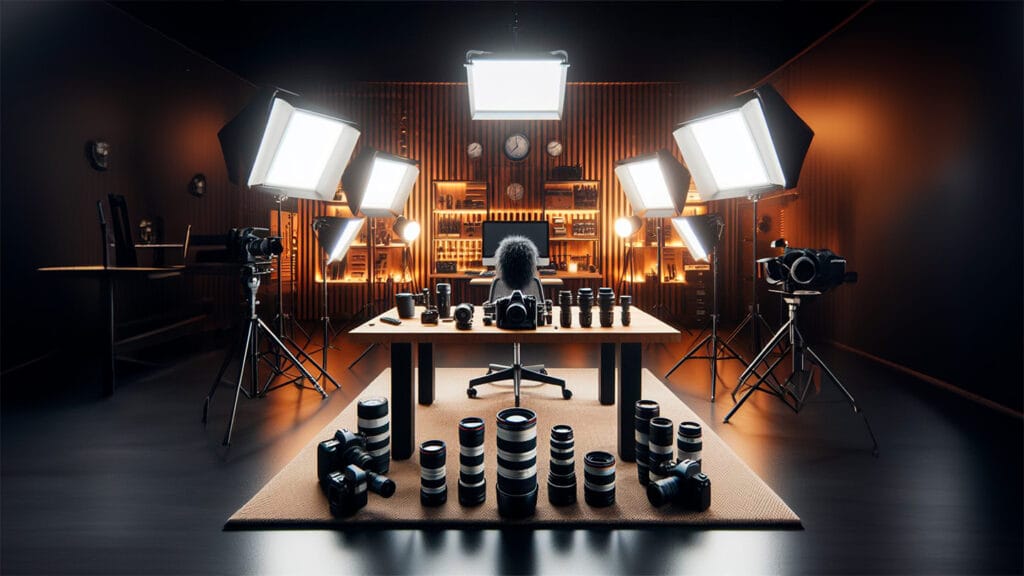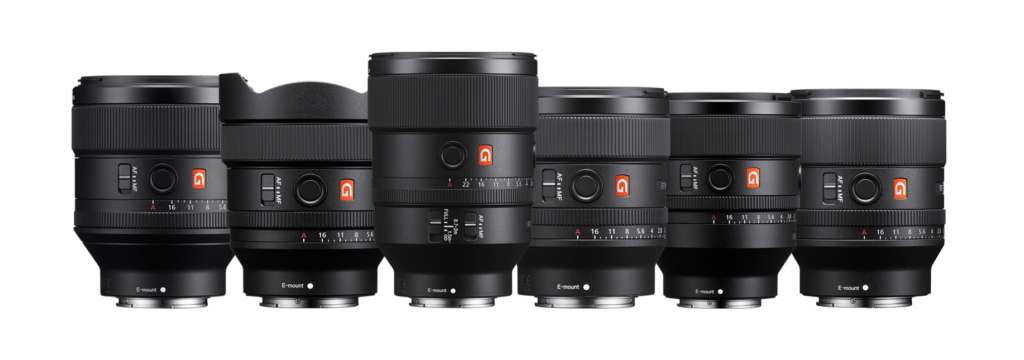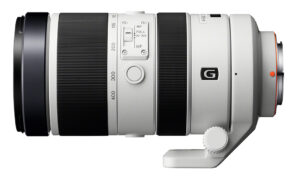
Last Updated: March 25, 2024
Photography and video are art forms that rely heavily on technology. One of these crucial pieces of technology is the camera lens. There are two main types of lenses: prime lenses and zoom lenses. Each has its own advantages and disadvantages, so let’s look at the Difference Between Prime Lenses vs Zoom Lenses to help you choose the best lens for your specific needs.
What is a Prime Lens?
A prime lens is a lens with a fixed focal length, also known as a “fixed lens”. This means that this lens has a set angle of view that cannot be changed. The only way to enlarge your subject and make it fill more of the frame is to get physically closer to it. Conversely, the only way to fit more into the frame is to move away.
Prime lenses only have a specified focal length, such as 50mm. They come in all sorts of sizes and focal lengths, from fisheye to super telephoto.
What is a Zoom Lens?
A zoom lens, on the other hand, has a variable focal length. By turning the zoom ring, you move optical elements inside the lens to obtain a different angle of view. This means that you can make objects appear larger by turning the zoom ring in one direction, or fit more objects in the frame by turning it in the opposite direction.
Zoom lenses have two specifications that represent the two extremes of the zoom range, such as 70-200mm. Such a lens can act as a 70mm focal length lens, a 200mm focal length lens and everything in between.
One of the most versatile zoom lenses for 2024 that we featured here on the blog was the Tamron 35-150mm, which you can see in detail in this article here.
Advantages of Prime Lenses
Cost
Many modern prime lenses are significantly cheaper than their zoom counterparts. A 24mm f/2.8 lens will cost around R$400, while a 24-70mm f/2.8 will cost R$1900-2300. Even if you cover focal lengths between 24mm and 70mm with fast prime lenses like 35mm f/1.8, 50mm f/1.8 and 85mm f/1.8, you’ll still end up paying less.
Size and weight
Many beginners often want monster lenses like the 70-200mm f/2.8 with image stabilization. It’s true that these lenses are extremely sharp, have insanely fast autofocus motors and can survive a lot of abuse. However, they are also much more visible due to their sheer size, and their heavy weight can cause back and neck pain and even long-term injury.
Prime lenses offer a kind of compromise – they trade versatility in favor of size and weight. Some time ago, I decided to go with an 85mm f/1.4 lens instead of a 70-200 f/2.8 and I’ve never really regretted that decision. Having only big lenses sometimes means you’ll leave your camera at home instead of taking it with you wherever you go.
Learning factor
Many photographers believe that being forced to “zoom” from the inside out using the old-fashioned walking method is a good way to learn composition and find better angles. It also supposedly helps you get used to a lens and use it to its full potential.
Some of this is true. I can say that my 50mm prime lens has helped me in some ways, but in all honesty, such a restriction can be just as detrimental to your learning process. I believe it’s important to have at least one zoom lens if you’re a prime lens photographer, and vice versa.
Creative Control with Faster Apertures
Most fast, professional zoom lenses, such as the 14-24mm, 24-70mm and 70-200mm, have a fixed maximum aperture of f/2.8. Fast, professional prime lenses, on the other hand, can go up to f/0.95. For this reason, they offer not only better light-gathering capabilities, but also shallow depth of field, which can result in photographs with beautifully rendered background highlights known as “bokeh”.
Low light
A fast prime lens will allow you to shoot subjects in low light without introducing blur, thanks to a larger / wider aperture. Due to typically simpler optical designs, prime lenses can easily “open up” to f/2 or even f/1.2.
These lenses will let in two to three times more light than a fast professional zoom lens with an aperture of f/2.8. Although many zoom lenses feature optical image stabilization systems to help you in low light conditions, these systems are useless if you have a moving subject.
Sharpness
Nowadays, both zoom and prime lenses are quite sharp. But for longer focal lengths, zoom lenses tend to lose sharpness near their maximum focal length. This is especially true with lenses that go up to 500mm or 600mm, where prime lenses in this category always outperform zoom lenses.
Advantages of Zoom Lenses
Despite the extra weight and cost, they are extremely popular and can be very convenient to use. There are several areas where even the best fixed focal length lenses can’t beat a good zoom.
Versatility
The most obvious reason to buy zoom lenses is their versatility. Zoom lenses can be great when a photographer needs to be sure they can handle a variety of different situations: you can go from wide-angle to telephoto in a quick turn of the zoom ring without the need to physically move.
Image stabilization
Modern zoom lenses usually offer image stabilization systems of 3-4 stops, be it Canon’s Image Stabilization (IS), Nikon’s Vibration Reduction (VR), Sigma’s Optical Stabilization (OS) or Tamron’s Vibration Compensation (VC). Even if you have an f/4 lens, you can still get sharp images when shooting non-moving subjects in dark environments.
Portability
A single zoom lens can replace two or three prime lenses. This also means that you only have to worry about moving around with a single lens attached. A single zoom lens can save you from carrying a large backpack. In a way, certain zoom lenses allow you to reduce weight, because you don’t need to bring several prime lenses to cover the whole range.
Prime Lens vs Zoom Lens: Which Should You Get?
Now that you’ve seen the advantages of each type of lens, which type should you get? It all depends! If you’re after a very shallow depth of field, a prime lens would be ideal.
But if you need a single lens for a variety of applications, a zoom lens would probably be better. That’s why most wedding photographers simply love 24-70mm f/2.8 zooms, as this range on a full-frame camera can do almost everything, from group shots to portraits.
Final considerations
Beginning photographers and videographers are often faced with the choice between buying a fixed focal length lens or a zoom lens. As you can see from this article, both have their advantages and disadvantages, so choosing between the two can be quite difficult.
It takes time to figure out which equipment best suits your working style, whether you’re a professional producer, an amateur or an online content creator.
Some people end up with a single superzoom lens, while others swear by their prime lenses and refuse to touch a zoom lens. As you learn to use your equipment over time and start to hone your photographic skills, it really doesn’t matter what you choose, as long as it doesn’t hinder your creativity.
*(Some articles may have been written or structured with Artificial Intelligence, but they were all reviewed, improved and rewritten by a Human.)
**(May Contain Affiliate Links. It means I may earn a commission every time you click on one of the external links, but do not worry. There is no additional cost to you, on the contrary, Sometimes you can even have extra benefits and discounts. And you will be helping to maintain the blog. For more detailed information consult my Affiliate Disclosure Statement)








